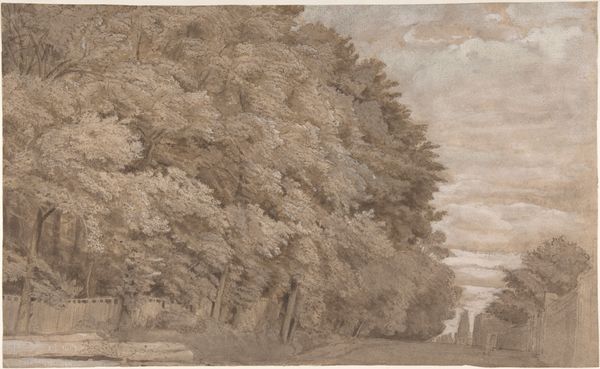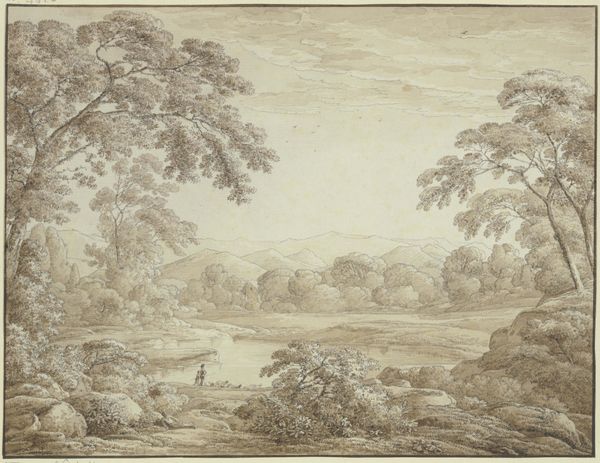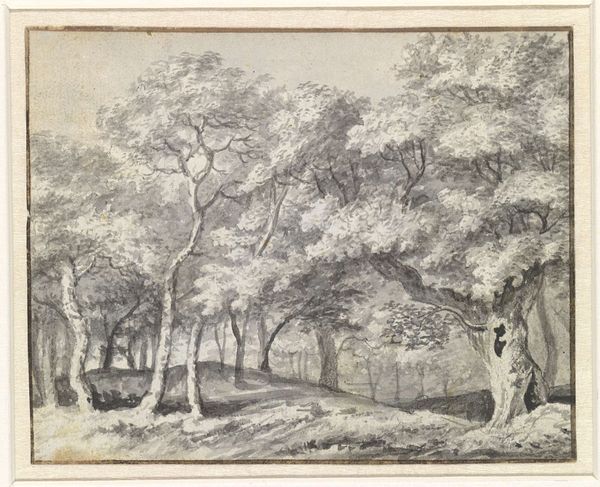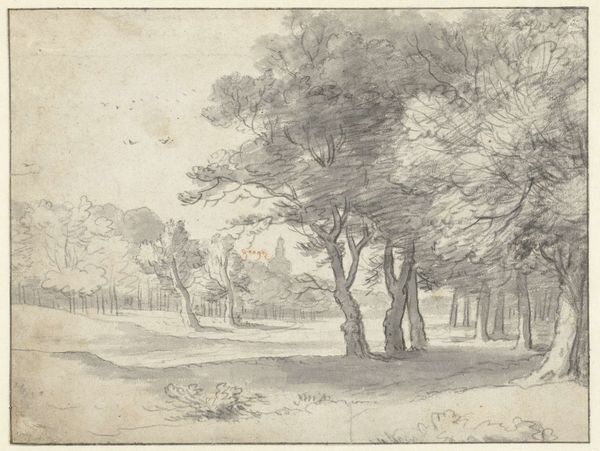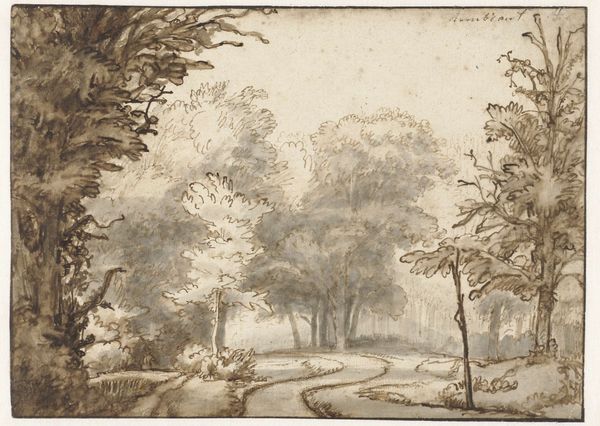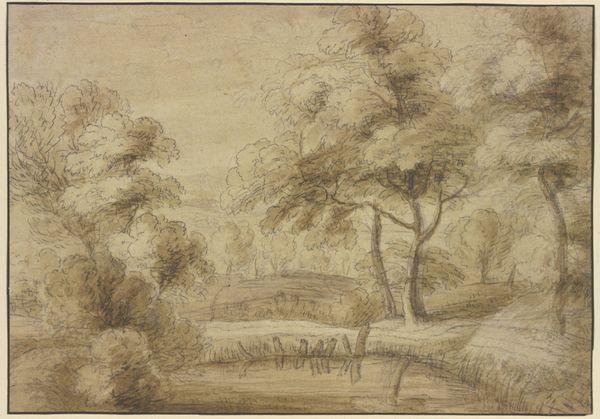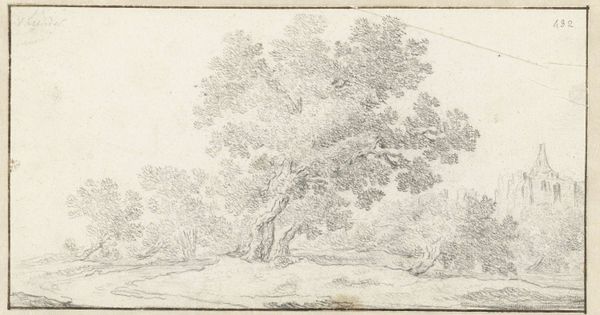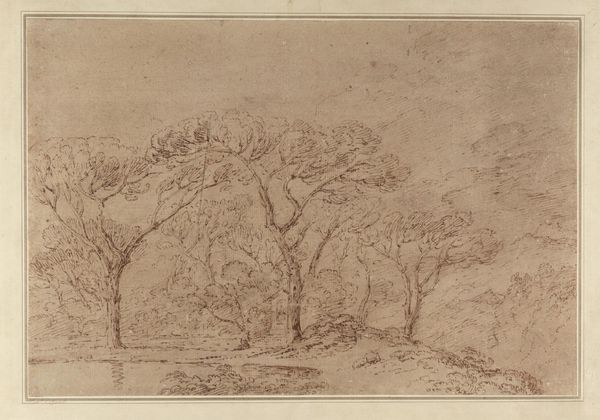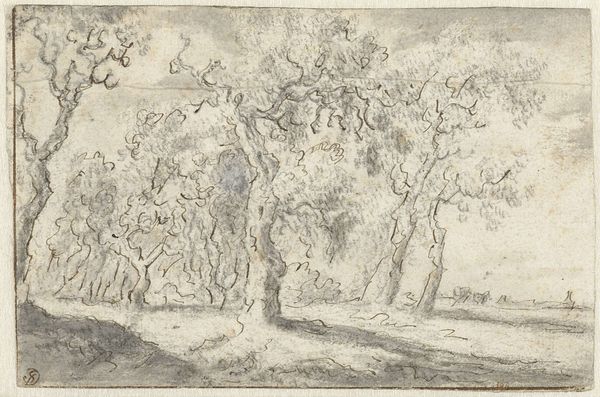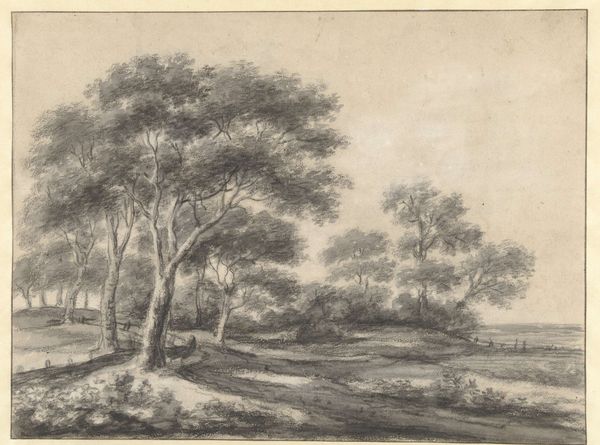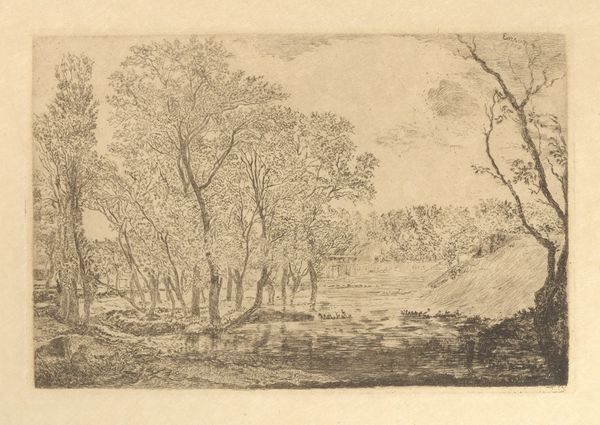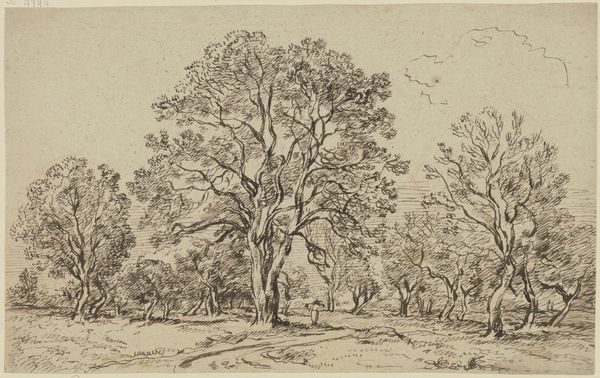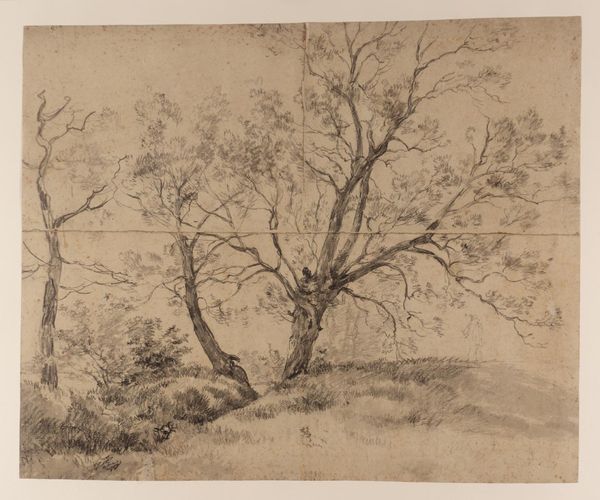
drawing, paper, ink
#
drawing
#
baroque
#
dutch-golden-age
#
landscape
#
paper
#
ink
#
line
Dimensions: height 96 mm, width 154 mm
Copyright: Rijks Museum: Open Domain
Jan de Bisschop rendered this drawing of Haagse Bos with pen in brown ink and brush in brown wash in the mid-17th century. Here, the trees are not merely botanical specimens but potent symbols. Since antiquity, trees have been associated with life, growth, and the connection between the earthly and the divine. Think of the Tree of Life in ancient Mesopotamian art, or the sacred groves of the Celts and Germanic tribes. Even in secular contexts, trees carry weight. In Romantic landscapes, they often mirror the emotional state of the viewer, their gnarled branches echoing inner turmoil or spiritual yearning. We might even see a faint echo of this in De Bisschop's work. Notice the leaning tree on the right side, a symbol of resilience, bending but not breaking. This motif reappears throughout art history: consider the stoic trees in Courbet’s landscapes, each bearing witness to the passage of time. The image of the tree persists. It reflects our subconscious longing for stability and rootedness in an ever-changing world.
Comments
No comments
Be the first to comment and join the conversation on the ultimate creative platform.
